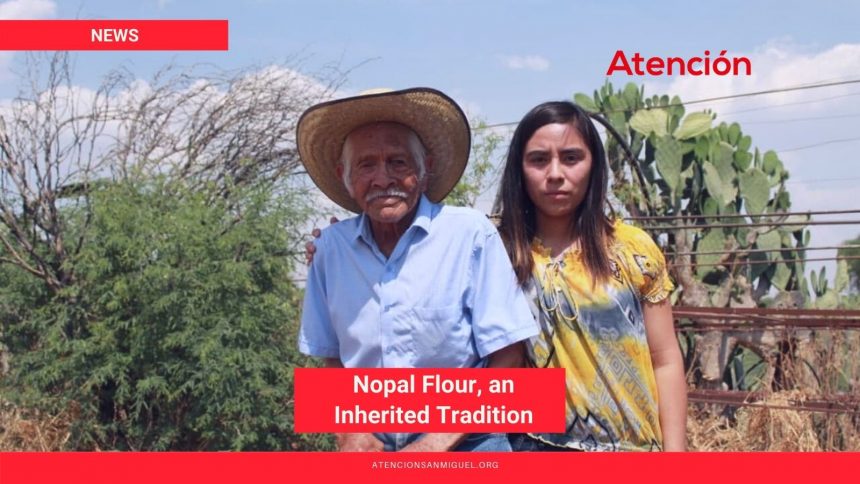Don Refugio “Cuco” Ramírez has just turned 93 years old, and has received his first dose of the COVID-19 vaccine. He was born during the Cristero War, on April 14, 1928. In 1997 he recalled how his Mother fed him and his brothers during those tough times, and how people used to control diseases like diabetes with the nopal cactus.
In the Cristero War Catholics were harassed by the government, and many, like Cuco’s family, became nomadic. They lived in San Diego de la Unión, Los Rodríguez, San Miguel de Allende, and Dolores. Due to the constant movement, there was no food. But the nopal cactus was always an option, his Mother told him.
He was 70 when those memories resurfaced. He remembered how people would dehydrate nopal and grind it to make nopal powder. Diabetics ate this powder to decrease their glucose levels. Cuco began experimenting to recreate the powder, but his technique was very rustic. He cut the paddles, took the thorns off, chopped them, and set it to dry over crystals. Then it was manually ground and strained to get the powder.
“Many people started purchasing my product, and their glucose levels improved. When the Universidad Tecnológica del Norte de Guanajuato heard about what I was doing, they came to my house and helped me organize a project to get the proper equipment. The State government then gave me a dehydrator and an electric mill,” he said.
On his property he continued planting nopales until he no longer had the energy to keep working. His children? They were not interested. Most went to the US, and the one who stayed behind makes adobe. His grandchildren started helping him four years ago, when he could no longer do it. Somebody suggested that the grandchildren quit school, but he said no, that “school comes first,” so they stopped helping him.
In our conversation, on the road to Dolores a day before his birthday, Don Cuco told us about his adventures as a castaway in Tamaulipas and Quintana Roo. He also told us how he paid to work as a slave in Spain—by mistake. The stories are true, he said.
Nowadays, Don Refugio still plants small crops of corn, garlic, and chamomile, which “keeps me busy,” he said. He continues planting nopal, and a month ago the DIF from Dolores bought 1,500 plants from him. Two months ago, his granddaughter, Alma Ramírez, started experimenting and bringing back the tradition of making nopal powder. Although she is studying digital design, she knows that she can benefit from Refugio’s knowledge and begin what could be a major project.
If you want to contact the family, send an email to almayashid.17@gmail.com

